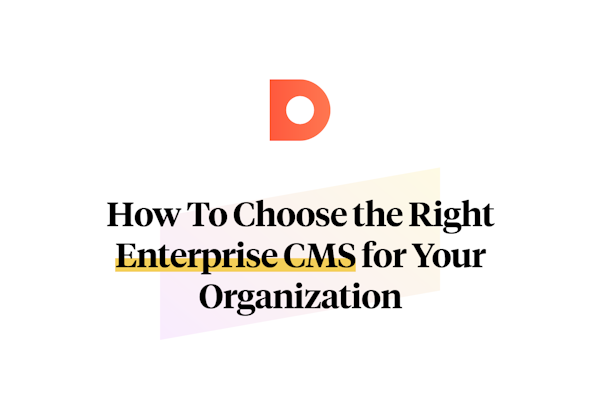The DatoCMS Blog
March update: new infrastructure, and lots of small improvements!
Hello friends,
you probably didn't notice, but we skipped the last monthly update! All of our focus was on the big infrastructure change we briefly told you about in January. It took a little bit more than anticipated, but it's finally done, and it's already paying its dividends (more info below if you're interested)!
Apart from that, during this time we managed to ship a lot of smaller but super-useful improvements, and the number of agencies choosing to become partners continues to grow day by day, which is awesome.
Let's take a closer look at all the new stuff and announcements in detail!
Faster and more scalable: DatoCMS is now on a multi-tenant sharded infrastructure!
That's quite a mouthful, I know. Long story short, DatoCMS now is capable of storing your content on multiple databases instead of a single one. What does it mean for you?
The load is distributed, so everyone will notice better response times — many customers have already reported performance improvements of up to 30%!
The number of projects/clients can scale up to an order of magnitude more than the previous architecture;
We can now provision new customers into one of our shared databases, or into an isolated database of their own, offering ultra-reliable performances. Obviously that's an Enterprise feature, but I think it's still reassuring for anyone to know that it's now available as a possibility.
Call to arms: you review DatoCMS on G2. We give you money (or plant a tree for you).
This one is a little hard to swallow. We've tried for years to do the right thing® and rely solely on organic reviews on review aggregators like G2 and the like... but it's hard to compete when all kinds of incentives are put in place by other competing products, and the platform has no problem accepting it (in fact, it's the first to foster a heavily reward-based environment).

So, despite our best intentions, here's our deal: are you a DatoCMS user? Do you like the product? Would you be happy to recommend it? Do you have 10 minutes to spare?
Then:
go to G2 and write a review;
we'll pay you €100 in credits on the platform for your next DatoCMS invoices, or we'll plant a beautiful, thorny Kapok tree in Ghana for you (roughly equivalent to 2,000kg of absorbed CO₂). Your choice! 🌴
Big round of small product updates!
Here's what changed in the last weeks product-wise:
Locale fallbacks and filtering by locale presence is now available on the Content Delivery API;
Customizable Image preview and Excerpt fields let you customize how your SEO meta tags will look like on the frontend;
Completely revised UI for your record's history: it's now much more polished, and you can only see what changed compared to the previous/current revision!
A better datetime field editor — actually MUCH better for teams in different timezones!
Easily regenerate slugs on existing records;
Duplicate blocks on Modular Content fields in one click;
Always monitor the number of blocks used in a record;
And finally, 2FA now offers backup codes.
Learn everything about Next.js new On-Demand ISR
Another terrific video-tutorial from Tuomo this month. This time you will learn what On-Demand ISR is, how it works, how to implement it to your own Next.js application and also how to use DatoCMS webhooks to automate your publishing process.


